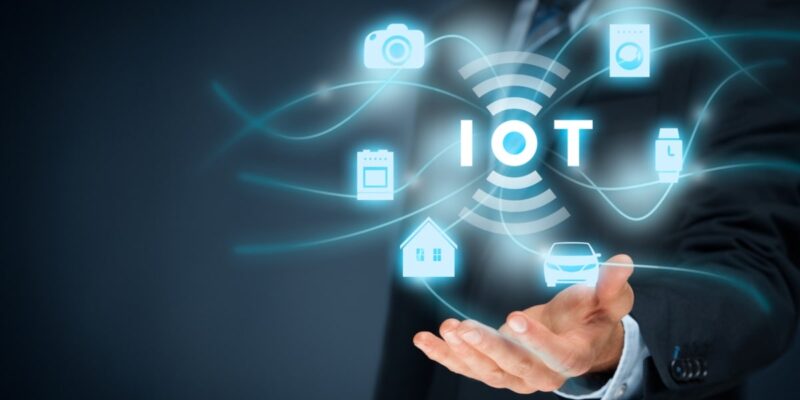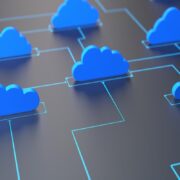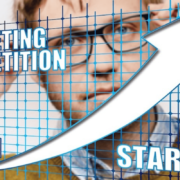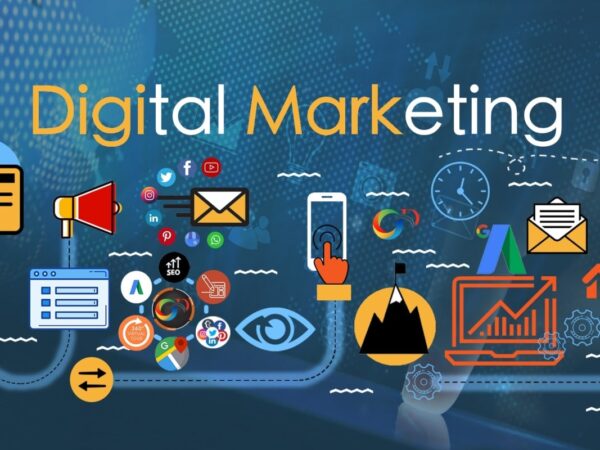
Understanding the Internet of Things (IoT): Revolutionizing Business Operations
In recent years, the term Internet of Things (IoT) has become a buzzword across industries, but what does it actually mean? How does it function, and how can businesses leverage its capabilities to drive growth and innovation?
In this comprehensive guide, we’ll break down the concept of IoT, its benefits, potential challenges, and actionable strategies for successful implementation in your business.
What is IoT?
IoT, or the Internet of Things, refers to a network of interconnected devices that communicate and share data with each other over the internet.
These devices can range from everyday household items—like smart thermostats and refrigerators—to complex industrial machinery and even city infrastructure. The essence of IoT lies in its ability to collect and exchange data, allowing for smarter operations and informed decision-making.
How IoT Works
At its core, IoT operates through sensors, software, and other technologies that connect physical objects to the digital world. Here’s a breakdown of how it works:
- Sensors and Devices: These collect data from the environment or from user interactions. For instance, a smart thermostat might measure temperature and humidity levels.
- Connectivity: The collected data is transmitted to the cloud or local servers via various communication protocols, such as Wi-Fi, Bluetooth, or cellular networks.
- Data Processing: Once the data reaches the cloud, it is processed and analyzed. This analysis can reveal patterns, insights, and actionable intelligence.
- User Interface: The insights gained from data processing are presented to users through applications, dashboards, or alerts, allowing for real-time monitoring and decision-making.
The Growing Importance of IoT
As businesses continue to navigate the complexities of a digital economy, IoT is emerging as a critical tool. According to a report by Statista, the number of connected IoT devices is expected to reach 30 billion by 2025, signaling its increasing relevance across sectors.
Benefits of IoT for Businesses
The integration of IoT into business operations offers a myriad of advantages. Here are some of the most compelling benefits:
1. Enhanced Operational Efficiency
IoT enables businesses to streamline operations by automating routine tasks and monitoring processes in real time. For example, manufacturing facilities can use IoT sensors to track equipment performance, allowing for proactive maintenance and reducing downtime.
2. Cost Reduction
By automating processes and optimizing resource utilization, IoT can significantly lower operational costs. For instance, smart energy management systems can analyze energy consumption patterns, leading to reduced utility bills and improved sustainability.
3. Improved Customer Insights
IoT devices can gather valuable customer data, providing insights into user behavior and preferences. This information can help businesses tailor their products and services to better meet customer needs, ultimately driving sales and customer satisfaction.
4. Increased Innovation
With access to real-time data and analytics, businesses can identify trends and opportunities for innovation. IoT facilitates the development of new products and services that address emerging consumer demands.
5. Enhanced Security
IoT technology can improve security measures by enabling real-time monitoring of facilities and assets. For example, connected surveillance cameras can alert security personnel to suspicious activities, providing an additional layer of protection.
Challenges and Risks of IoT
While the benefits of IoT are significant, businesses must also be aware of the challenges and risks involved in its implementation:
1. Data Security Concerns
As more devices connect to the internet, the risk of data breaches increases. Businesses must prioritize cybersecurity measures to protect sensitive information from unauthorized access.
2. Integration Complexities
Implementing IoT can be complex, especially for organizations with legacy systems. Ensuring compatibility between new IoT devices and existing infrastructure requires careful planning and execution.
3. Data Privacy Issues
Collecting and storing user data raises ethical considerations around privacy. Businesses must comply with regulations such as GDPR and ensure transparent data handling practices to build customer trust.
4. Reliability of Connectivity
IoT devices depend on stable internet connections. In regions with poor connectivity, the effectiveness of IoT solutions may be compromised.
How to Implement IoT in Your Business
Implementing IoT in your business requires a strategic approach. Here are actionable steps to help you get started:
1. Identify Business Goals
Begin by clearly defining your objectives for implementing IoT. Are you looking to improve operational efficiency, enhance customer experience, or develop new products? Understanding your goals will guide your IoT strategy.
2. Conduct a Feasibility Study
Evaluate the feasibility of IoT implementation within your organization. Assess your current infrastructure, available resources, and potential challenges to identify areas that need improvement.
3. Choose the Right Technology
Selecting the appropriate IoT technology is crucial. Consider factors such as device compatibility, communication protocols, and data storage solutions. Opt for scalable solutions that can grow with your business.
4. Develop a Data Strategy
Establish a clear data strategy that outlines how data will be collected, analyzed, and used. Ensure compliance with data privacy regulations and implement robust security measures to protect sensitive information.
5. Pilot Testing
Before a full-scale rollout, conduct pilot tests to evaluate the effectiveness of your IoT solutions. Gather feedback from users and make necessary adjustments to improve performance.
6. Training and Development
Invest in training programs for your team to ensure they are equipped to handle new IoT technologies. This will enhance employee engagement and improve overall adoption rates.
7. Monitor and Optimize
Once implemented, continuously monitor your IoT systems to assess performance and identify areas for improvement. Regularly analyze data to uncover insights and optimize operations.
Current Trends in IoT
As IoT technology evolves, several trends are shaping its future:
1. Edge Computing
With the proliferation of IoT devices, edge computing is gaining traction. This approach involves processing data closer to the source, reducing latency and bandwidth usage. Edge computing enhances the responsiveness of IoT applications, making real-time analytics more feasible.
2. AI and Machine Learning Integration
The integration of artificial intelligence (AI) and machine learning with IoT is transforming data analysis. These technologies enable businesses to derive deeper insights from IoT data, enhancing decision-making and predictive maintenance.
3. 5G Connectivity
The rollout of 5G networks is set to revolutionize IoT applications. With faster speeds and lower latency, 5G will support a higher volume of connected devices and enable more sophisticated applications, such as autonomous vehicles and smart cities.
4. Sustainability Initiatives
As environmental concerns grow, businesses are leveraging IoT for sustainability initiatives. IoT solutions can optimize resource consumption, reduce waste, and monitor environmental impact, aligning with corporate social responsibility goals.
5. Interoperability and Standardization
The need for interoperability among IoT devices is driving efforts toward standardization. As more devices connect to various platforms, establishing common protocols will facilitate seamless communication and integration.
Real-World Applications of IoT
To illustrate the transformative potential of IoT, let’s explore some real-world applications across various industries:
1. Manufacturing
In manufacturing, IoT-enabled devices monitor machinery performance and predict maintenance needs. This proactive approach minimizes downtime and enhances production efficiency. Smart factories utilize IoT to optimize supply chain logistics and manage inventory in real time.
2. Healthcare
IoT is revolutionizing healthcare through remote patient monitoring and telemedicine. Wearable devices collect health data, allowing healthcare providers to monitor patients’ conditions and respond promptly to emergencies. IoT solutions also streamline hospital operations, improving patient care.
3. Agriculture
In agriculture, IoT technology enhances crop management through precision farming. Sensors monitor soil conditions, weather patterns, and crop health, enabling farmers to make data-driven decisions that optimize yields and resource use.
4. Transportation and Logistics
IoT plays a crucial role in logistics and transportation by enabling real-time tracking of shipments. Fleet management systems monitor vehicle performance, optimize routes, and enhance fuel efficiency, reducing operational costs.
5. Smart Homes
In the consumer space, smart home devices—such as smart thermostats, lights, and security systems—allow homeowners to automate and control their living environments. IoT-enabled appliances can communicate with each other, enhancing convenience and energy efficiency.
Conclusion: Embracing the IoT Revolution
The Internet of Things (IoT) is not just a passing trend; it is a transformative force that has the potential to revolutionize how businesses operate. By connecting devices and leveraging data, organizations can unlock new levels of efficiency, innovation, and customer satisfaction.
However, successful IoT implementation requires careful planning and a commitment to addressing potential challenges. As businesses increasingly adopt IoT solutions, they must prioritize security, data privacy, and interoperability to maximize the benefits.
In a world where connectivity and data drive success, embracing IoT is no longer optional—it’s essential. If you haven’t yet explored how IoT can enhance your business operations, now is the time to start. By leveraging this powerful technology, you can position your organization for long-term growth and success in the digital age.








